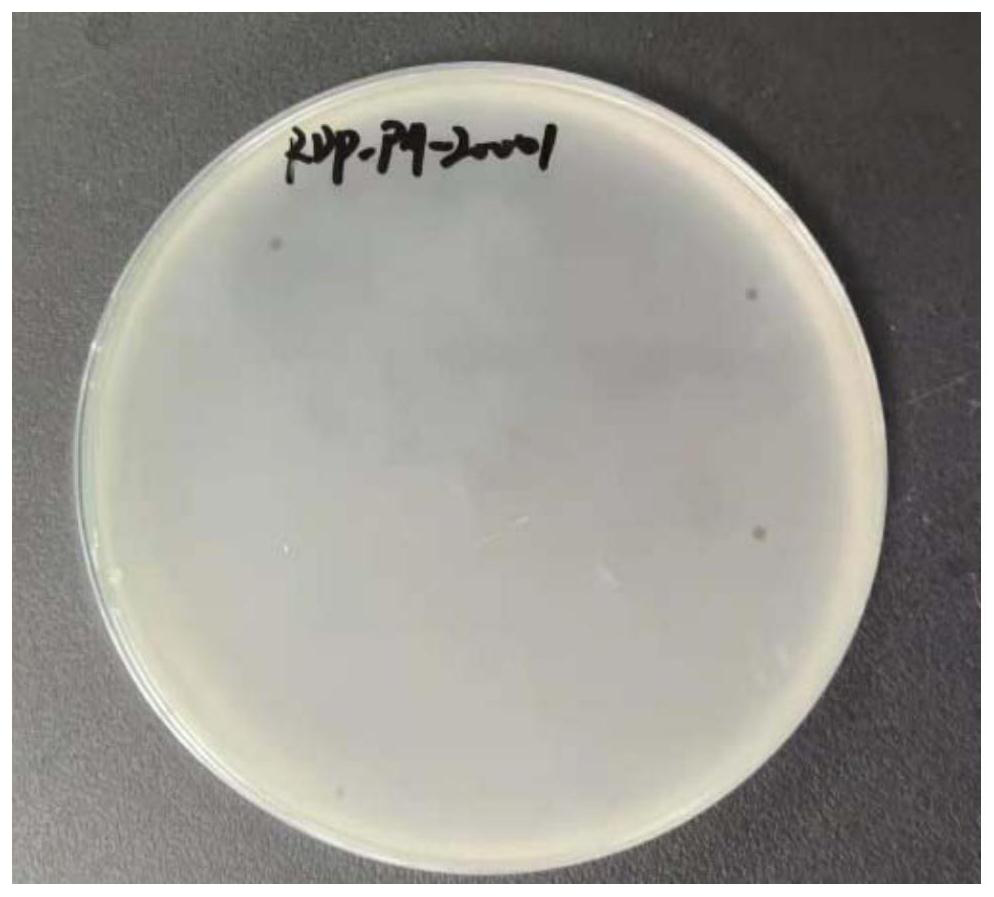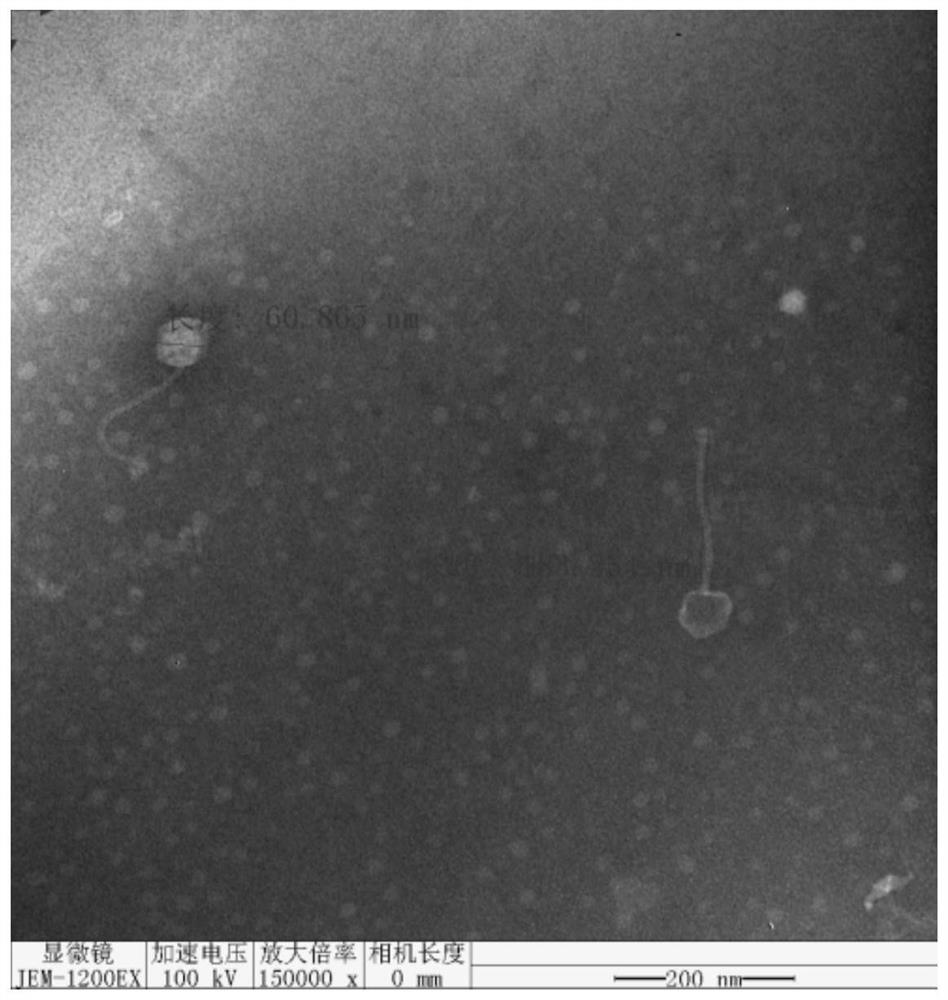High-cracking pseudomonas aeruginosa bacteriophage RDP-PA-20001 and application thereof
A technology of RDP-PA-20001 and Pseudomonas aeruginosa, applied in the direction of phage, virus/phage, application, etc., can solve the problems of untimely treatment and ineffective medication, and achieve wide acid-base tolerance range and strong lytic activity , the effect of high temperature tolerance
- Summary
- Abstract
- Description
- Claims
- Application Information
AI Technical Summary
Problems solved by technology
Method used
Image
Examples
Embodiment 1
[0029] The isolation and identification of embodiment 1 Pseudomonas aeruginosa BP-20001
[0030] Sampling from the feces of chicken farms with Pseudomonas aeruginosa bacterial disease, using the method of aseptic operation, carry out 1:10 dilution with sterilized LB broth, take 10ml of 1:10 sample dilution and add to In 90ml common broth medium, culture at 37°C for 18-24 hours. A thin film of bacteria grows on the surface of the culture medium, and the culture medium is yellow-green.
[0031] Pick the culture from the thin film of the enrichment solution, inoculate it on the hexadecyltrimethylammonium bromide agar plate by streaking, and culture it at 37°C for 18 to 24 hours, and it will appear off-white, flat and wet on the surface. And the surrounding agar showed yellow-green colonies with a diameter of about 2-4mm. Pick a typical colony and streak it on a hexadecyltrimethylammonium bromide agar plate for three consecutive purifications, then pick a single colony and inocu...
Embodiment 2
[0032] Example 2 Isolation and identification of Pseudomonas aeruginosa phage RDP-PA-20001
[0033] The feces sample used in the experiment of the present invention was collected from a manure pond in a broiler chicken farm in Jimo, Qingdao in 2020, as a sample for phage isolation.
[0034] (1) Isolation of phage RDP-PA-20001:
[0035] Take 10㎎ of feces and put them in 10ml LB broth, soak overnight at 4°C, centrifuge at 10,000rpm for 5min, and filter the supernatant with a 0.22μm microporous membrane to sterilize. Take 3ml of the filtrate and 3ml of the host bacterium culture solution in the logarithmic growth phase, add them together to 20ml of autoclaved LB broth, put them in a 37°C incubator, and culture them overnight to multiply the possible phages. Take 3ml of the sample culture solution, centrifuge at 10000rpm for 5min, and take the supernatant to filter and sterilize with a 0.22μm microporous membrane. Assume that the above filtrate contains phages. The LB broth was...
Embodiment 3
[0041] Morphological observation of embodiment 3 phage
[0042] Using phosphotungstic acid negative staining method: 20 μL of phage proliferation solution (titer 10 9 pfu / mL) was dropped on a paraffin sheet, and the copper grid was placed on it for 10 minutes and then removed to absorb phage. Dry at natural room temperature for 2-3 minutes, stain with 2% phosphotungstic acid aqueous solution, blot the water after 2 minutes, dry naturally for 5 minutes, and observe the phage morphology with an electron microscope. Photo by electron microscope ( figure 2 ) It can be seen that the head of bacteriophage RDP-PA-20001 is icosahedral and stereosymmetric, the length of the head is 60.865nm, and the length of the phage tail is 183.254nm. According to the latest classification and naming of phages, it belongs to the long-tailed phage family .
PUM
| Property | Measurement | Unit |
|---|---|---|
| Potency | aaaaa | aaaaa |
Abstract
Description
Claims
Application Information
 Login to View More
Login to View More - R&D
- Intellectual Property
- Life Sciences
- Materials
- Tech Scout
- Unparalleled Data Quality
- Higher Quality Content
- 60% Fewer Hallucinations
Browse by: Latest US Patents, China's latest patents, Technical Efficacy Thesaurus, Application Domain, Technology Topic, Popular Technical Reports.
© 2025 PatSnap. All rights reserved.Legal|Privacy policy|Modern Slavery Act Transparency Statement|Sitemap|About US| Contact US: help@patsnap.com



